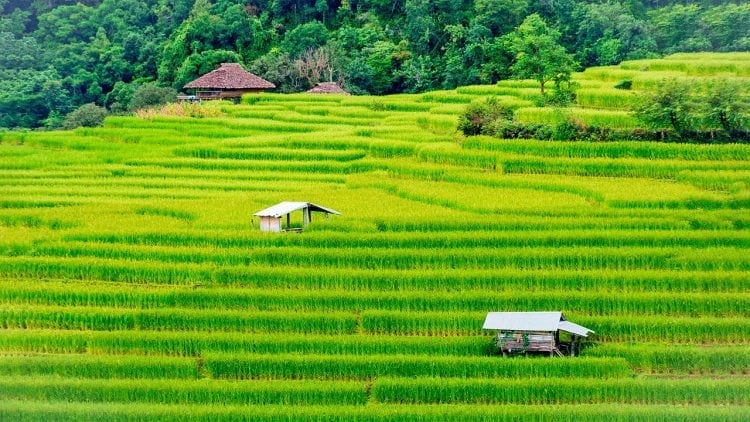
The world faces many problems ranging from climate change and water crisis to war and food shortages. As disasters hit, we have to figure out how to prevent disease, stop a population from starving as food becomes scarce and providing them with shelter and support. The world is seeing numerous disasters from forest fires to hurricanes. We also have extreme weather patterns.
There is also population expansion in areas such as China. These issues are all part of a bigger picture that results in a food crisis. Growing food is becoming difficult and facing many of the issues mentioned. In some parts, we cannot keep up with the demand for food.
In other parts, we cannot grow food as we normally used too. Some of the many solutions being presented to this challenge are the creation of new and efficient agricultural technologies and practices as well as creating more efficient and resilient agricultural products. These products are the result of extensive scientific research to create something that is better and safer than previous versions. Recently, scientists in China have created a new strain of rice that is much stronger than most strains and can feed a lot of people.
The New Strain
The news surrounding the new strain was first released by China’s state media and was the achievement of Professor Yuan Longping, who is often referred to as the “father of hybrid rice.” Professor Yuan began his work on rice hybridization in 1964 and in the 1970s he, along with many others, recognized that China would enter a period of growth and expand its population greatly. Professor Yuan wanted a resource that would address this population boom. His goal was to create rice that was both easy to grow in great numbers and maintain or increase its nutritional value. Today, about 20% of the world’s rice comes from hybrid strains that were developed by Professor Yuan and 50% of the rice that is consumed in China are from hybrid strains.
In spring, Professor Yuan and his team had planted over 200 types of rice in areas of different salinity and measured their growth over time. These strains were developed through extensive trait selection, crossbreeding, and genetic analysis. According to Professor Yuan, other rice strains meant for saline soil would only yield about 1.5 tonnes per hectare. The strains that were tested by Professor Yuan yielded over 4.5 tonnes per hectare, which is a stark difference from other strains. It also did better than wild rice strains that grow in saline, which usually yields between 1.5 to 2.25 tonnes per hectare. This new strain represents both an improved and profitable solution to growing rice. In the South China Morning Post, Professor Yuan estimated that the new strain could produce over 50 million tonnes of rice and feed over 200 million people.
Making a rice strain that is resilient to saline environments is perfect for China and many countries in Asia because there are a lot of land spaces that are not cultivated because of how saline the soil and water is. In China alone, there are about 100 million hectares of land that have relatively high saline and alkali levels that prevents normal rice strains from growing adequately. Being able to turn these areas into usable lands would increase food yields, employment, and give a boost to the local economies in those areas. There are other potential positives to this as well because the saline high areas are not bacteria friendly and would reduce the need for things like pesticides. The rice themselves would also absorb some of the calcium and minerals in the surrounding area, which might make them more beneficial for consumption.
Despite all the improvement, there is still continued work that needs to be done. The rice cannot grow in all 100 million hectares of saline rich areas because some are too high or have other compounds that prevent the rice from growing.
The Future of Food Modification
Professor Yuan believes that it is inevitable that the tools of biotechnology would have to be used to further add benefits to rice and create better strains. This can be said of many other food products. There is a limit to cross breeding and biotechnology and genetics would exceed those limits through genetically modified foods. There is much research into using genetic technologies, like CRISPR, to modify food products and make them better than previous versions. Researchers are working to address many different aspects of food modifications.
As climate changes, it becomes important to find ways to allow crops, like the rice here, to be able to grow in more harsh environments. The soybean was originally from Asia and now it grows in many parts of the Americas. Imagine for a moment what it would mean to be able to grow food in the dry and arid parts of Africa, where many countries experience food crises. A big area that is being studied is the resilience of agricultural products against pests, disease, and herbicides. These would reduce the need for harsh chemicals or antibiotics to be used, which are usually entered into human systems via agricultural consumption or waste runoffs. There are even attempts at making meat products in the lab, getting rid of the need for large amounts of livestock.
Many of these products are being researched through biotechnology and traditional crossbreeding means. They represent the future of what humans will be consuming and would offer a reprieve to the issues presented here. As we improve the technologies and methods to create these products, we may see them appear quicker and quicker.
There may even be novel products that can be created, like different colored apples or other fruits. As long as they are safe and do not add to the environmental pressures that many agricultural products do, in cases of water consumption and pesticide/herbicide runoffs, then they can be a great boon to future generations.









